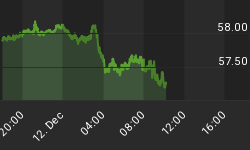Given the opposing views of the potentially parsimonious new Congress and the continuously accommodative Federal Reserve, there is a movement afoot among Republicans to eliminate the Fed's "dual mandate." Prior to 1977, the Fed only had one job: maintaining price stability. However, the stagflation of the 1970s inspired politicians to assign another task: promoting maximum employment. This "mission creep" has transformed the Fed from a monetary watchdog into an instrument of social policy. We would do well to give them back their original job.
The imposition of the "dual mandate" was informed by the Keynesian belief that inflation and unemployment don't mix. An economic concept known as the "Phillips curve" postulates that low levels of one cause high levels of the other. But, like many things in modern economics, the curve is a fiction. There is no real reason why low inflation would produce unemployment or full employment would create inflation.
On paper, at least, the Fed has appeared to strike the balance that Congress demands. But this is a fool's errand. The Fed's dual mandate is the equivalent of asking a corporate CEO to maximize shareholder value by giving away as many free products as possible to consumers.
The best way for the Fed to ensure maximum employment is to focus on its one true job - creating price stability. The irony of the dual mandate is that by trying to satisfy both, the Fed ensures that we will get neither.
While it is true that increases in inflation may occur concurrently with drops in unemployment, there is no logical causality that can be implied. Any correlation simply results from inflation lowering the real cost of employment. Put simply: because inflation reduces wages in real terms, employers can afford to hire more people. So it's lower wages, not inflation, that puts people to work.
Inflation does nothing to alter the structural issues that cause unemployment. Like everything else, the labor market is governed by the laws of supply and demand. High unemployment results from a wage structure that is too high relative to demand. Demand for labor is a function of productivity, or more accurately, profitability per worker. Absent higher productivity, which takes time to develop, the only way to clear the imbalance is for wages to fall. However, government and unions typically prevent this from happening. Economists describe this as wages being "sticky" on the downside.
Over-taxation and over-regulation further restrict demand and add to unemployment. On that front, one of the worst offenders is the minimum wage law. It doesn't actually raise wages for anyone, but simply renders unemployable many low-skill workers. By creating inflation, the Fed effectively lowers the minimum wage. Another cause is extended unemployment benefits. Since these payments narrow the disparity between employment and unemployment, and in some cases may even be preferable to accepting a low-paying job, workers are incentivized to reject employment opportunities that they might otherwise accept.
To get around these roadblocks, the Fed lowers the cost of labor through inflation. However, this inefficient solution to a simple problem creates negative consequences for the economy. While wages may go up with inflation, goods prices usually rise faster. The net result offers no benefit for workers. By tricking workers into accepting lower wages, the Fed allows politicians to claim meaningless victories.
In addition, wages are only one cost of employment. Even as inflation lowers real wages, other factors can work to increase employment costs. In the current environment, higher payroll taxes, new health care mandates, economic uncertainty, and the potential for even higher future taxes to fund large budget deficits are all offsetting the "benefits" of lower wages. On top of that, large current budget deficits are crowding out small business credit. The result is that employment costs are rising despite lower real wages. Taken together, these policy mistakes are creating a toxic, job-killing mix.
The other fallacy of the dual mandate is that a fully employed workforce demands higher wages, forcing business to raise prices. More employment increases the supply of goods and services. Yes, employment raises demand, but that demand is satisfied by the additional supply created by a productive economy.
Since wages are the price of labor, wages are themselves prices. To say that rising prices are caused by rising prices makes no sense. Workers cannot demand higher wages unless the increases are justified by higher productivity. If they are, such wage gains will not result in higher goods prices.
The real reason that prices rise, for both goods and wages, is that the Fed creates inflation. This policy undermines the economy by destroying both current savings and the incentives to accumulate future savings. Since savings finance capital investment, lower savings equal weaker economic growth.
So, the best way for the Fed to create maximum employment is to focus on the single mandate of price stability. While a few elected officials seem to be figuring this out, most are just as clueless as the Fed. Unfortunately, even if Congress succeeds in changing the Fed's mandate, there is not much chance that monetary policy will change significantly. Keynesian thinking is so ingrained in Bernanke and his colleagues that they will exploit any wiggle room in their directives to jump back in the driver's seat and send us ever faster toward the edge of an economic cliff.
Peter Schiff is president of Euro Pacific Capital and host of The Peter Schiff Show
For in-depth analysis of this and other investment topics, subscribe to The Global Investor, Peter Schiff's free newsletter. Click here for more information.
Click here to download Peter's latest Special Report: My Five Favorite Gold & Silver Mining Stocks.
Please note: The Peter Schiff Show will be produced by a new media company created by Peter Schiff. Euro Pacific Capital is not affiliated with this company. Neither Euro Pacific Capital nor any of its affiliates are responsible for the content of SchiffRadio.com.
















